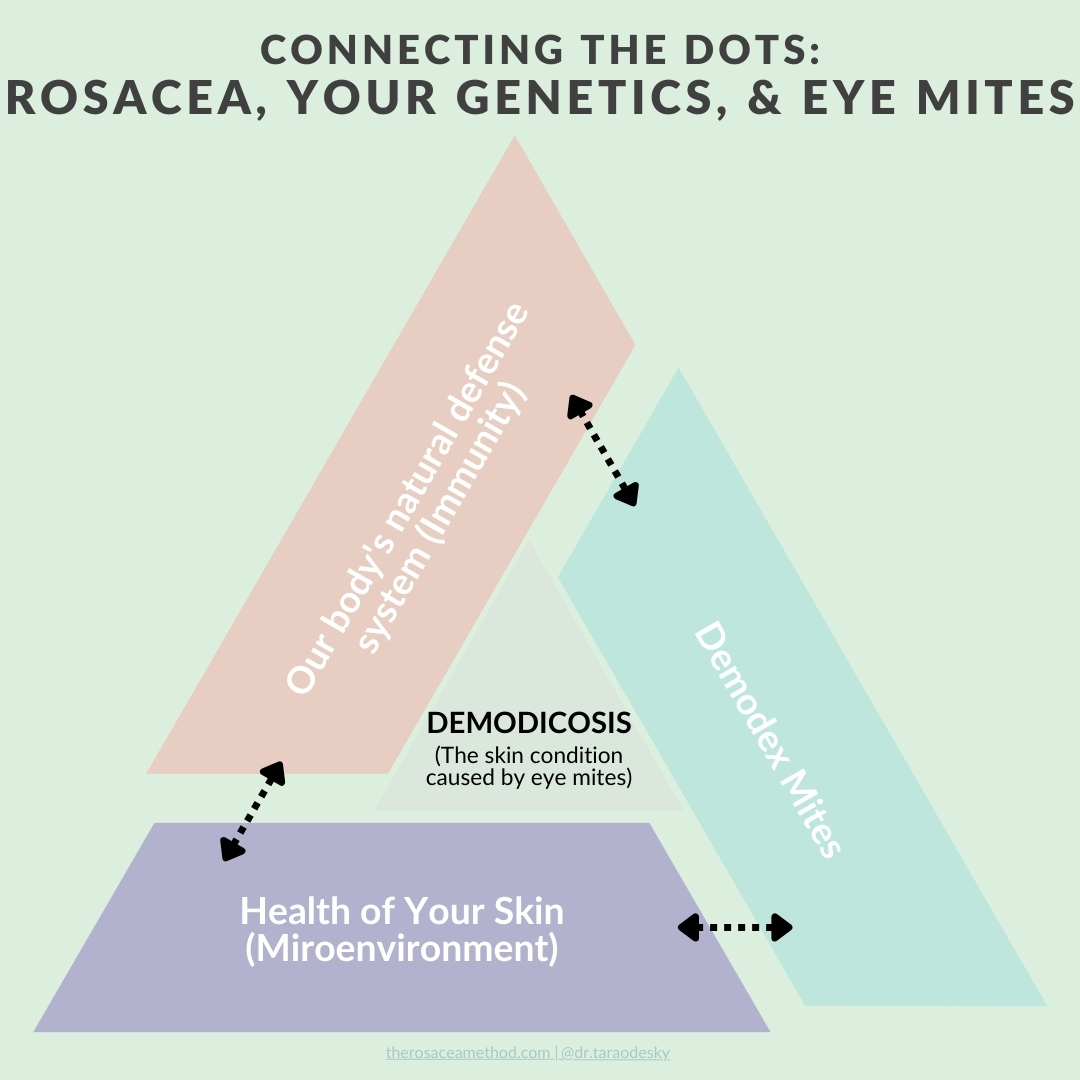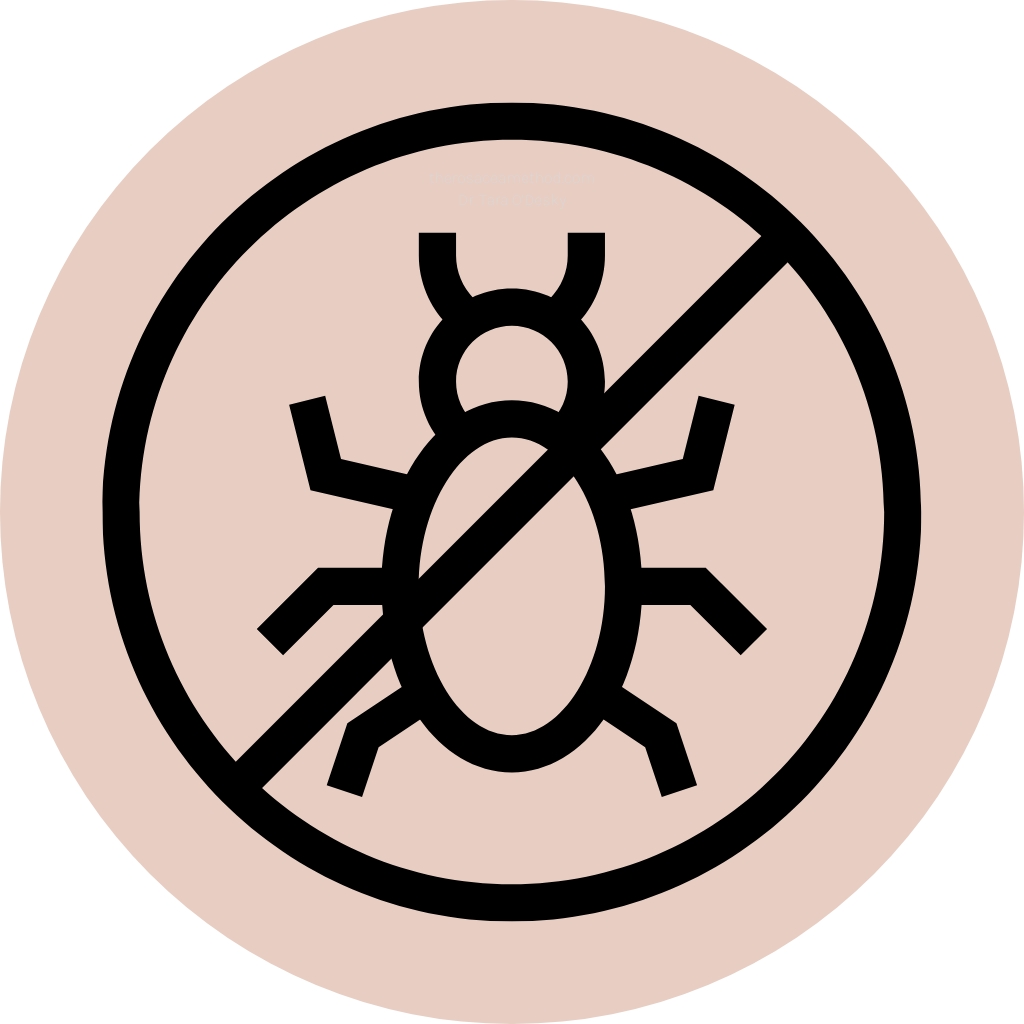When you are dealing with tiny, uninvited guests on your skin, like Demodex mites, the idea of them finally leaving or, rather, their numbers decreasing, can bring a sense of relief. It's a natural thing to wonder about, a sort of hope for better days for your skin. People often look for any little hint that things are getting better, searching for those subtle cues that tell a story of improvement. Just as we rely on clear, well-made signs to help us find our way in the physical world, we also pay very close attention to the gentle signals our own bodies send us. These personal indicators, a kind of internal communication, can really show us quite a bit about what's happening underneath the surface, so to speak.
It's a process of observing, really, of noticing small shifts day by day. You are, in a way, becoming a careful observer of your own skin's daily narrative. There are no flashing lights or loud alarms that go off to tell you these tiny creatures are on their way out. Instead, the signals are much softer, a little like a quiet whisper. Knowing what these soft whispers might sound like can help you feel more in tune with your body's healing process. It's about being aware of changes that suggest a positive shift is happening, perhaps a noticeable reduction in the population of these little mites.
You might be wondering what exactly to keep an eye out for. What are the little pieces of evidence that could suggest a turn for the better? It’s not always obvious at first, but with a bit of focus, you can often pick up on some encouraging shifts. These signs can show up in how your skin feels, how it looks, or even how it reacts to different things. It’s a bit like putting together a puzzle, where each small piece contributes to a bigger picture of progress. So, too it's almost about learning a new language your skin is speaking.
Table of Contents
- What Changes Might You Notice as Demodex Mites are Dying?
- Is the Itch Getting Better or Worse When Demodex Mites are Dying?
- How Long Does It Take to See Signs of Demodex Mites Dying?
- What Other Signs Could Indicate Demodex Mites are Dying?
What Changes Might You Notice as Demodex Mites are Dying?
When you are trying to figure out if those tiny mites are on their way out, one of the first things you might pick up on is a change in how your skin feels. It’s often a subtle feeling, not a dramatic overnight transformation, but more of a gradual easing. You might find that the constant, slightly bothersome sensations you have been living with start to fade a little. This can be quite a welcome shift, a sense of quiet returning to your skin that wasn't there before. It’s about noticing the absence of something rather than the presence of something new, you know?
Feeling a Shift in Skin Sensation – Early Signs of Demodex Mites Dying
Many people describe a lessening of that crawling or tickling feeling. It’s a sensation that some folks find quite irritating, almost like tiny legs moving across their face, especially at night. If you start to experience less of this particular feeling, it could be a positive sign. The skin might also feel less irritated or generally less active, in a way. This reduction in sensation is often one of the earliest hints that the mite population is becoming smaller. It’s a quiet change, but one that can make a big difference to your daily comfort. Pretty much, you just feel more at ease.
Another thing you might notice is a decrease in that odd, sometimes prickly sensation. This isn't always an itch, but more like a general discomfort that can make you want to rub your face or scalp. As the mites begin to die off, this feeling might become less frequent or less intense. It's a sign that the tiny creatures are causing less commotion on your skin. This subtle shift in sensation can be very encouraging, letting you know that the situation is moving in a better direction. You might find yourself thinking about your skin less often, which is a good thing, really.
Visible Changes to Your Skin's Appearance – Observing Demodex Mites Dying
Beyond how your skin feels, you might also start to see some improvements in its look. The skin might appear less inflamed, with any redness or blotchiness starting to calm down. This can be quite a noticeable change, especially if you have been dealing with a lot of visible irritation. The overall complexion might seem a bit more even and healthy. It's like the skin is taking a deep breath and relaxing. This visual improvement is often a clear indicator that the mite activity is decreasing. You might even find that your skin feels smoother to the touch, almost as if it's getting back to its natural state, basically.
Sometimes, tiny bumps or rough patches that were present might begin to smooth out. These small imperfections, which can be a result of mite activity, tend to shrink or disappear as the mite population lessens. You might notice that your pores appear a little less prominent, too. This is because the skin is becoming less congested and irritated. It's a gradual process, but over time, these visual improvements can become quite obvious. It’s a good idea to take note of these changes, as they can serve as encouraging milestones in your skin's recovery. You could even say it's a bit like watching a garden bloom after a long winter.
Is the Itch Getting Better or Worse When Demodex Mites are Dying?
The itch is often one of the most bothersome parts of dealing with Demodex mites, so it's natural to pay close attention to any changes in this particular sensation. It's not always a straightforward improvement right away, as sometimes things can feel a little different before they get truly better. You might experience a period where the itch seems to shift, or even, in some cases, a brief flare-up before a noticeable reduction. This is why paying close attention to the overall pattern is quite important. It’s about looking at the bigger picture, not just one moment in time, you know?
Understanding the Itch Factor – How Demodex Mites Dying Affects Comfort
Initially, some people report a temporary increase in itching or a sensation of more activity. This could be a reaction as the mites die off and their bodies are cleared from the skin. It’s a bit like a temporary clean-up process that can cause a brief stir. However, this phase typically doesn't last very long. After this initial period, the itch should start to lessen considerably. You should find yourself scratching less often, and the intensity of any itching that does occur should be much milder. This reduction in persistent itchiness is a very clear sign of progress, you see.
Over time, the periods of itch-free comfort should become longer and more frequent. You might find that you can go for hours, or even a full day, without feeling that familiar urge to scratch. This is a truly welcome change for anyone who has been dealing with constant skin irritation. It suggests that the mite population is no longer causing the same level of disturbance to your skin. The skin just feels more settled and peaceful. It's a pretty good indicator that things are moving in the right direction, actually.
Redness and Irritation – What Happens as Demodex Mites are Dying
Along with the itch, visible redness and irritation are common concerns. As the mites begin to die off, you should observe a gradual reduction in these visual signs. The skin might appear less inflamed and less angry, losing that flushed or blotchy look. This is because the immune system is no longer reacting as strongly to the presence of the mites. The skin just looks calmer, more at ease, and generally healthier. It's a very encouraging visual cue that the underlying issue is improving, in some respects.
Any raised, red patches or small pimple-like bumps that were present might also start to flatten and fade. These are often direct results of mite activity and the skin's response to it. As the mites diminish, these blemishes should become less noticeable. The skin texture might also feel smoother and more uniform. It's a bit like the skin is healing and returning to a more natural state. This reduction in redness and irritation is a key indicator that the mite population is declining and your skin is recovering, typically.
How Long Does It Take to See Signs of Demodex Mites Dying?
One of the most common questions people have is about the timeline for seeing these improvements. It’s a very understandable concern, as nobody wants to wait around indefinitely for relief. The truth is, it can vary quite a bit from person to person, and there's no single, set answer. Your body is unique, and so is the way it responds to changes. It’s about being patient and consistent with whatever steps you are taking to address the mites. You know, it's not an instant fix, usually.
Patience and Observation – The Timeline for Demodex Mites Dying
Some individuals might start to notice very subtle changes within a few weeks of beginning a regimen. These could be small reductions in itching or a slight calming of redness. For others, it might take a bit longer, perhaps a month or even a couple of months, before more significant improvements become apparent. It really depends on the initial mite population, your skin's sensitivity, and how consistently you are following any recommended approaches. It’s a process that unfolds over time, rather than a sudden event. So, it's pretty much a waiting game, in a way.
The key is to keep observing your skin regularly and to not get discouraged if you don't see dramatic changes right away. Look for those small, consistent improvements. A little less itch today, a slightly calmer appearance tomorrow. These incremental shifts add up over time to a much bigger picture of progress. It's about building a trend of improvement, not just looking for a single, defining moment. Remember, your skin needs time to heal and rebalance itself. It’s a journey, and every small step forward is a victory, you know?
What Other Signs Could Indicate Demodex Mites are Dying?
Beyond the more common skin sensations and visible changes, there are other, perhaps less obvious, things you might pick up on that suggest the mite population is shrinking. These can be related to the overall health of your hair and skin, providing a broader picture of improvement. It’s about looking at how your whole face and scalp are behaving, not just isolated spots. These additional observations can really solidify your feeling that things are getting better. So, what else might you notice, you ask?
Hair Follicle Health – A Sign of Demodex Mites Dying
Demodex mites often hang out in hair follicles, so improvements in hair health can be a good indicator. If you have been experiencing issues like thinning eyebrows or eyelashes, or even a bit of hair loss on your scalp, you might start to see some positive changes. New hair growth might become more noticeable, and existing hairs might appear stronger and healthier. This is because the follicles are no


